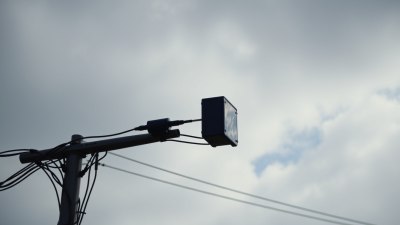Why Weather Alerts Only Ping When You're Off Wi-Fi
Explore why weather alerts typically notify users only when off Wi-Fi and understand the technology behind these notifications.

Weather alerts are a critical part of keeping people safe and informed about severe weather conditions such as tornadoes, hurricanes, flash floods, and other emergencies. Most smartphone users notice that these alerts often ping or notify them only when their devices are off Wi-Fi, using cellular data instead. This puzzling behavior can raise several questions: Why do weather alerts prefer cellular networks over Wi-Fi? What technology drives this notification system? And are there ways to customize or improve how these alerts work? This article delves into the mechanisms behind weather alert notifications and explains why they tend to activate only when your device is not on Wi-Fi.
Understanding Weather Alert Systems
Weather alerts are generally issued through government or authorized agencies such as the National Weather Service (NWS) in the United States. These agencies send emergency alerts to wireless devices via systems like the Wireless Emergency Alerts (WEA) program. WEA is a public safety system that allows authorized emergency personnel to send geographically targeted messages to mobile devices.
The alerts usually include notifications about severe weather, AMBER alerts for missing children, or other critical situations requiring immediate attention. These messages are concise, impactful, and designed to override silent or do-not-disturb modes. But the way these alerts are sent and received is key to understanding why Wi-Fi connectivity affects their delivery.
How Emergency Alerts Reach Your Phone
The Wireless Emergency Alerts system uses cellular networks to push notifications directly to your mobile device. Here is a simplified overview of the process:
- Alert Origination: Authorized agencies issue alerts using alert origination servers connected to the cellular network.
- Cell Broadcast Technology: Alerts are distributed through cell broadcast technology — a method similar to SMS but capable of sending messages to multiple devices simultaneously within a geographic area.
- Cellular Reception: Your mobile phone listens for these cell broadcasts when connected to a cellular network and immediately displays the alert.
This system relies heavily on the cellular connection rather than Wi-Fi because cell broadcasts operate at the cellular network level. Devices connected only to Wi-Fi, particularly if in airplane mode with Wi-Fi enabled, won’t receive these broadcasts since the cellular radio either isn’t active or not primarily used.
Why Doesn’t Wi-Fi Receive These Alerts?
Wi-Fi networks operate differently compared to cellular networks. They rely on a local internet connection and typically do not support cell broadcast technology. Here are several reasons why Wi-Fi alone can’t pick up emergency weather alerts:
- Cell Broadcasts Do Not Transmit Over Wi-Fi: The WEA system uses cell broadcast messaging, a network function native to cellular service providers. Wi-Fi is a local area network and cannot transmit cell broadcast messages.
- Internet Protocol Limitations: Wi-Fi connects through IP networks, where messages like push notifications depend on internet-based services and apps. Emergency alerts need to reach users immediately with minimal latency, which cellular broadcasts provide more reliably.
- Device Operating System Restrictions: Some operating systems do not trigger emergency alert notifications without an active cellular signal because the alert mechanism is integrated with cellular radios.
How Devices Behave on Wi-Fi
When a smartphone is connected to Wi-Fi and out of cellular range or with cellular data turned off, typical push notifications still come through because Wi-Fi provides internet access. However, emergency alerts work differently. Here's why:
- No Cellular Radio Use: If the phone is registered only on Wi-Fi, the cellular radio may be inactive, disabling cell broadcast reception.
- App-Based Notification Dependence: Some weather apps push alerts over Wi-Fi using internet connections, but these are dependent on the app's functionality, your notification settings, and sometimes delayed compared to WEA.
- Variability Among Devices: Some newer devices and operating system versions have started supporting alert delivery over Wi-Fi through enhanced services, but these are exceptions rather than the rule.
Case Study: How Different Smartphones Handle Weather Alerts
The experience of receiving weather alerts varies depending on device type, operating system, and cellular carrier. Here’s an overview:
- Android Devices: Most Android phones rely fully on the WEA system via cellular networks. Unless connected to cellular data, weather alerts may not come through.
- iPhones: On iOS devices, Government Alerts are received over cellular networks and not Wi-Fi. However, apps like Apple Weather or third-party weather apps can send alerts over the internet but may not be critical alerts.
- Other Platforms: Some devices or regions offer alternative alerting methods that use internet-based push notifications to complement cell broadcast alerts. This is still not widespread globally.
Potential Workarounds and Improvements
Given the limitations of Wi-Fi in delivering emergency alerts, what options do users have?
- Enable Cellular Data: Keeping cellular data enabled ensures you receive cell broadcast messages timely, even while connected to Wi-Fi for other activities.
- Use Dedicated Weather Apps: Many weather apps send push notifications using Wi-Fi and can provide timely information, but these may not be as immediate as cellular alerts.
- Check Device Settings: On many devices, emergency alert settings allow customization for alerts you want to receive and how they appear.
- Look for New Technologies: Messaging protocols such as Advanced Mobile Location (AML) or next-generation alerting services aim to enhance and supplement emergency alert delivery, including over IP-based networks.
The Role of Carrier Networks
Cellular carriers play an instrumental role in delivering weather alerts. Since WEA messages are transmitted through carrier cell broadcasts, it is the carrier infrastructure that pushes alerts to all devices capable of receiving them in a localized cell area. If the cellular connection is not active or enabled on your device, the alert simply won’t arrive.
This means that even if you have full Wi-Fi connectivity, without a functioning cellular connection, your device may miss critical government-issued emergency alerts.
Why Immediate Delivery is a Priority
One reason for relying on cellular broadcasts is the need for immediacy. Weather emergencies require rapid notification without reliance on apps or internet connections, which might be slower or go down during a disaster.
Cell broadcast messages can be sent simultaneously to all devices in a cell tower’s range without congestion or delay. This ensures that even if internet or Wi-Fi infrastructure is compromised or busy, the population can still be alerted quickly.
International Differences
Not all countries use the exact same technology or protocols for weather or emergency alerts. Although many nations have implemented systems akin to WEA, the support for Wi-Fi-based alert delivery varies widely depending on infrastructure, carrier capabilities, and regulatory frameworks.
Some countries are experimenting with integrating alert systems into internet and Wi-Fi platforms to improve coverage, but these systems are in early stages.
Summary of Reasons for Alerts Pinging Off Wi-Fi
To summarize, weather alerts usually ping only when off Wi-Fi due to these key reasons:
- Cell broadcasts operate strictly over cellular networks, which Wi-Fi does not support.
- Emergency alert mechanisms are embedded in cellular infrastructure designed for immediate, simultaneous delivery.
- Wi-Fi notifications depend on internet-based push services or apps, which may not provide instant emergency alerting.
- Device operating systems link these alerts to cellular radios and carrier networks rather than the Wi-Fi connection.
Practical Tips for Users
If you live in an area prone to severe weather or emergencies, consider the following tips to ensure you never miss critical alerts:
- Keep cellular data turned on, even when connected to Wi-Fi.
- Subscribe to multiple alert sources, including official apps and local news apps that push notifications through the internet.
- Test your device’s emergency alert settings periodically to confirm they are active.
- Understand that airplane mode with Wi-Fi enabled will likely block emergency alerts since it disables the cellular radio.
- Invest in portable weather radios as an additional safeguard, especially for areas with poor cellular coverage.
Emerging Technologies and Future Directions
The technology behind emergency alerting is evolving. The integration of IP-based messaging protocols aims to enable emergency alerts through Wi-Fi and internet connections in addition to traditional cell broadcasts. This includes efforts such as:
- RCS (Rich Communication Services): Offers advanced messaging capabilities incorporating emergency alerts over data networks.
- Next Generation 9-1-1 Systems: Designed to route emergency information using IP, potentially enabling new alert delivery methods.
- Hybrid Alerting Systems: Combining cellular broadcasts with app notifications to ensure alerts are received regardless of connection type.
As these systems mature, users may soon see consistent weather alert delivery both on Wi-Fi and cellular networks alike.
Understanding why weather alerts currently depend on cellular data helps users better configure devices and prepare for emergencies. While Wi-Fi enables many conveniences, for critical alerts, a reliable cellular connection remains the best guarantee for timely notification.











